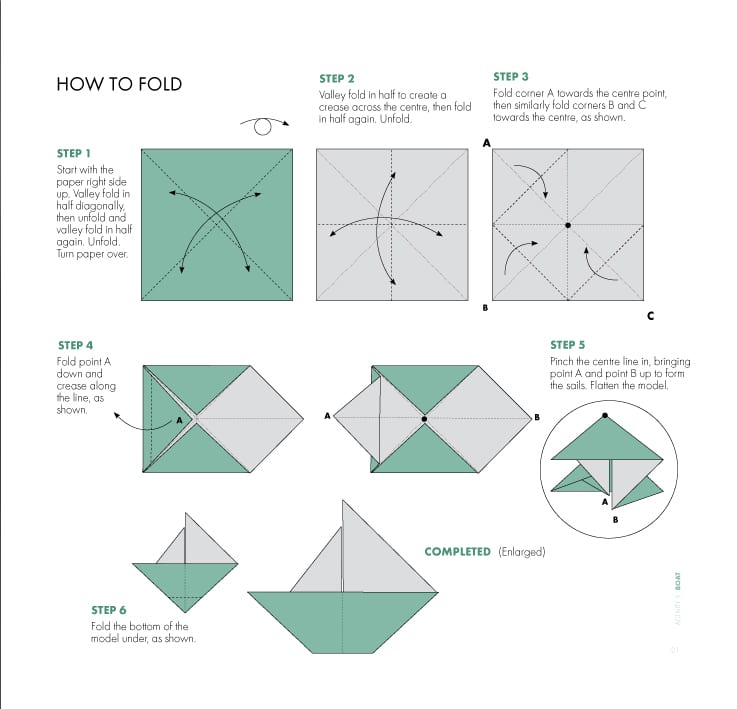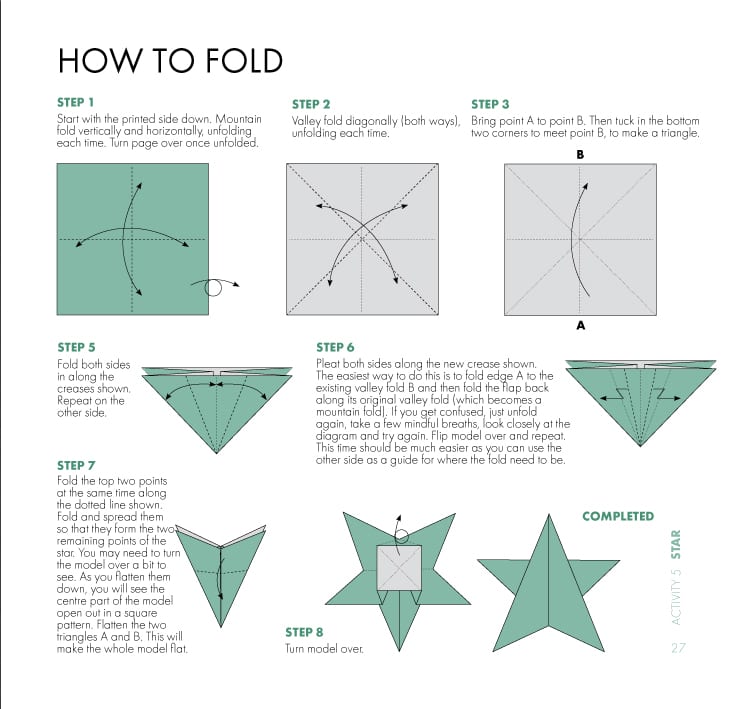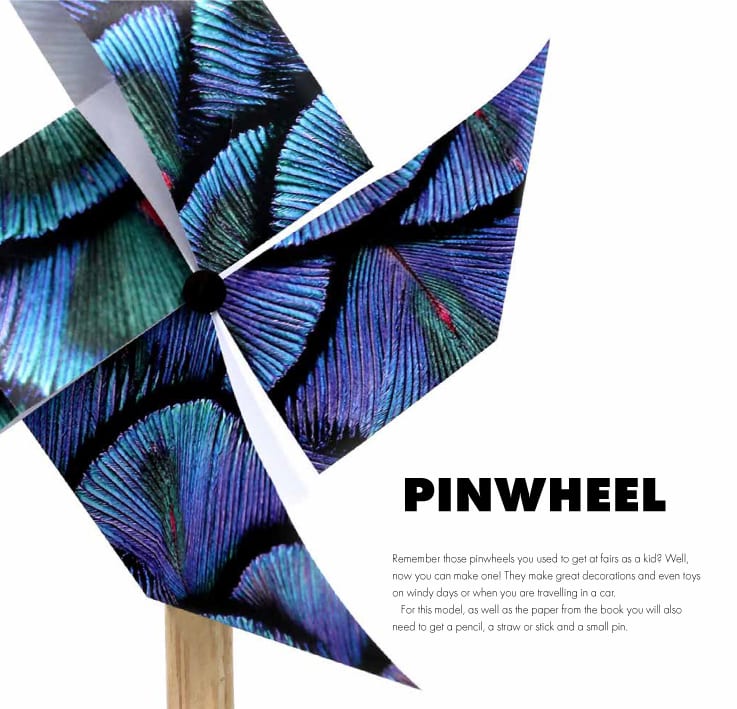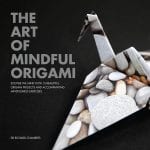Forget your coloured pencils! We’ve got something even better than adult colouring books, steeped in thousands of years of mystery, history and tradition.
That’s right,
The Mindful Art of Origami
It may sound simple, but folding paper has proven time and again to be extremely relaxing, perfectly marrying simplicity, complexity and concentration to be rewarded with interesting and beautiful decorations.
So, it’s relaxing, but how can Origami help me be mindful?
Well, mindfulness refers to the ability to be fully present and engaged in the moment. You have to focus on what is happening with your senses. What you see, hear, feel, taste and smell.
Cultivating our ability to be mindful has been proven to result in better mental and physical health as well as improved work performance.
We can literally rewire our brains (the prefrontal cortex to be exact) for happiness through practicing mindfulness!
Below you will find three Mindful Origami activities, including 11 steps of meditation, aimed at helping you develop your attention training for your own health and wellbeing. So grab some square paper, and let’s get folding…
Mindful Origami
THE WAVES OF YOUR BREATH
Lie down somewhere comfortable. Balance your boat on your belly.
Notice how it rocks up and down as you breathe, as if it were riding
waves on the ocean.
Trust that your body knows how to breathe perfectly well without
you trying to control it. It does a perfectly good job of this each night
as you sleep! Simply notice the natural expansion and contraction
of your belly — the rising and falling — by watching how your boat
pitches up and down.
If your mind wanders off (and it will — this is normal, remember),
just bring it back as soon as you notice. See what happens when you
bring it back gently, without judging or criticising yourself.
As you focus on your boat rocking on the waves of your breath,
what do you notice? Does your breath change? Does it find its own
natural rhythm? Does it get deeper or shallower?
Remember, the object of this exercise is to simply observe the breath
as it is, rather than trying to change it.
After you have rocked the boat on the waves of your breath for 5
to 10 minutes, can you remain aware of your breath throughout the
day? Can you notice when it changes (and learn to catch the storms
in your mind)?
TWINKLE, TWINKLE, LITTLE STAR
After folding the star model, take it outside at
night. Look up into the sky and gaze at the
other stars in the sky above.
Even though mindfulness begins with bringing our full attention to
what is happening in the five senses, we can also bring mindfulness
to our thoughts. So, as you gaze at the stars, you might like to do a
mindful reflection.
Consider for a moment that the Earth you are standing (or lying) on
is a tiny planet orbiting a mid-sized sun at the edge of the Milky Way.
The other stars you see are planets from our solar system, the suns of
other solar systems, and in many cases are themselves entire galaxies.
Feel the contact your body makes with the ground and notice the
effects of gravity. Tune in to the way the ground supports you, holding
you up. Get a sense of the Earth underneath you, supporting you.
If your attention wanders anywhere other than this reflection or
direct sensory experience, simply bring it back again. This noticing
and coming back is the foundation of mindfulness practice.
Take some mindful breaths. Appreciate how the air contains just the
right mix of gases to sustain life. Reflect on how the vast blackness
you are gazing at doesn’t have any of these gases. Take a moment to
be grateful for your breath.
Notice if a sense of gratitude for the Earth and its life-sustaining
properties appears. What does this feel like in your body? How does
it affect your thinking and actions?
MINDFULNESS MEDITATION
Through working through these activities, will have had more than enough opportunity to practise mindfulness. Perhaps you
have noticed how, when you are really focused on getting a crisp fold done, your attention is
engaged fully in the moment. And how when you are engaged and present, you are no longer caught up
in worries and concerns.
You don’t have to push these things away — they just go. That’s because in each moment we are
either caught up in the default mode of daydreaming and mind-wandering (which usually means
worrying, dwelling or reacting) or we are engaged and present. This is the basic principle of
mindfulness, and is why it is so good for both our wellbeing and performance.
While we can cultivate mindfulness through activities like origami, we can also develop it through
meditation. The word ‘meditation’ really means ‘attention training’ and mindfulness meditation
simply involves training our attention to be in the present. We do this by focusing it on what is
happening in the senses. When we do this repeatedly, we rewire the brain for greater focus and
awareness, as well as enhanced wellbeing and study/work performance.
We can use any of the five senses (what we can feel, see, hear, smell or taste) as the object of
meditation.
Here, we will use the sense of touch, as it is one of the most obvious and easiest to
pay attention to. In particular, we will focus on the movement of the breath. Breath is one of the
fundamental aspects of being alive, although we tend
to take it for granted. It is also an excellent anchor for keeping us present, as well as a way of
keeping track of our internal state.
- Sit comfortably. You can lie down, but you need to ensure that you stay awake during the meditation. This is an exercise in falling awake and zoning in rather than getting sleepy and zoned out. Don’t worry too much about your posture, but ensure that your spine is straight yet without tension. Find a posture that embodies alertness and relaxation at the same time.
- Set a timer for 5 minutes. This is a good amount to start with and you can gradually extend it once you get the hang of meditating.
- Take a moment to tune in to your body. Take note of the state it is in. Is it tired or energized? Is it tense or relaxed? If you notice tension, see if you can feel the specific muscles that are holding it, and let it go. You can’t force the body to relax but you can let go of tension once you notice it.
- Likewise, notice the state the mind is in. Is it busy with thoughts, or quiet? Is it alert or sleepy and dull? If you get caught up in thinking, let it go and bring your attention back to the body again.
- Notice the obvious sensations in the body, such as the points of contact with the floor. Feel the pressure, and tune in to the sense of support and stability.
- Now hold the pinwheel in front of you and blow. Notice it spin as your breath moves through it. Breathe deeply through your nose and blow again. Do this a few times, noticing which parts of your body expand and contract as you breathe in and out.
- Now put the pinwheel down and allow your breath to return to a natural rhythm. Don’t try to change it, for example by trying to breathe deeply. Trust that your body knows perfectly well how to breathe (it does a great job of it while you are asleep at night) and that it will find its own depth and rhythm if you let it. Allow the body to breathe naturally and simply feel the expansion and contraction, the rising and falling of the breath. Perhaps you can even feel the air as it enters and leaves the nostrils, or in the back of your throat.
- Find where in your body the breathing is most obvious and rest your attention there. Simply notice what it feels like to breathe in and out. Is the breath deep or shallow? Is its texture rough and course or smooth and silky? What else do you notice about the breath when you pay attention to it in this way?
- Can you notice the points where the breath turns around? At the top of the in-breath and the bottom of the out-breath, it definitely turns — although if you pay enough attention you will notice that there is no actual pause.
- When your attention wanders off (which it inevitably will, by the way) simply notice where it has gone and return it to the breath once again. See if you can do this without getting annoyed or judgmental that your mind has wandered, or thinking about whatever has distracted you.
- Continue to breathe in this way until the alarm goes off. Take a moment to check back in with your body and mind, noticing any differences compared to the start of the meditation.
Research shows that people who practise mindfulness meditation on
a daily basis, even just for 5 to 10 minutes at a time, experience a
range of benefits for their physical and mental health.
Doing it first thing every morning, before you get caught up in the
routine of your day, is generally the best time, although for some
people mid-morning or evenings can be better. Put the pinwheel
somewhere to remind you to practise.
It is also very useful to be aware of the breath throughout the
day. This keeps us grounded and present. And because the breath
changes when we are stressed or upset, paying attention to it
throughout the day gives us a very good window into our internal
states — and early warning when we start to get upset.








